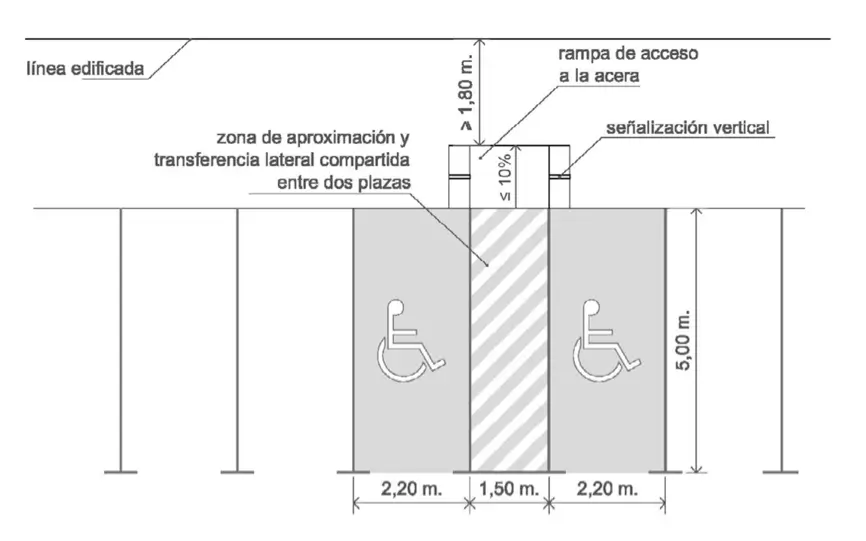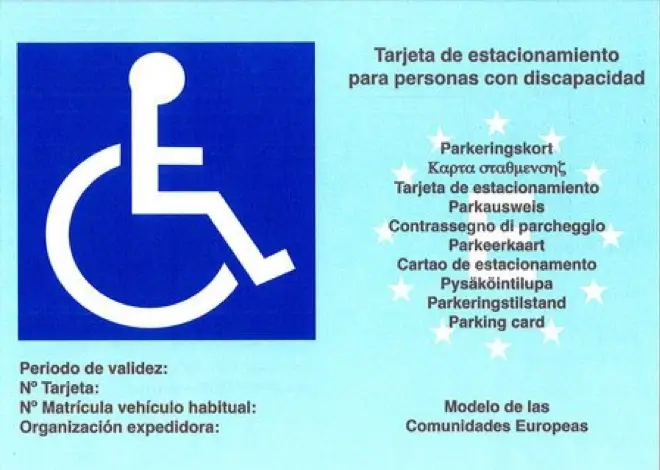Cities today and in the future face a series of challenges related to mobility and the coexistence of all users: from the circulation of all types of vehicles, including personal mobility vehicles (PMVs) to pedestrians, as well as the use of parking spaces on streets and in parking lots. And within this aspect in particular, solutions for the control and management of parking spaces for people with reduced mobility (PRM) are necessary.
It is true that, if you look and analyze carefully, cities are not fully accessible for people with reduced mobility or with some kind of functional diversity.
Moving around urban centers is difficult for blind people or those in wheelchairs.
That is why we must pay attention, in this second case, to drivers who have parking cards for people with reduced mobility and their rights.
Especially when finding a parking space is a complicated task in cities due to the limited number of parking spaces and often, in the case of reserved spaces, they are repeatedly usurped by unauthorized users -despite the fines involved-.
As fraud is committed in the inappropriate use of reserved parking spaces that are differentiated from the rest, good control is necessary.
Otherwise, the daily life of vulnerable groups is seriously affected.
The most effective way to do this is through the application of technologies and solutions developed by companies like Urbiotica, such as Fastpark‘s solutions, which guide authorized users to free spaces and generate alerts to parking lot surveillance services when violations occur if unauthorized users park in these reserved parking spaces.
How are parking spaces for people with reduced mobility?
Parking spaces reserved for people with reduced mobility are granted to wheelchair users, people who depend on two canes for walking, who have severe intellectual impairments, or who have difficulty moving around on obstacle terrain or up and down stairs.
For this reason, these reserved parking spaces play a key role for this group and have specific dimensions so that they can use them easily and autonomously.
Specifically, they should be located as close as possible to the entrances to establishments such as shopping centers or work offices.
They are arranged perpendicular or diagonally to the sidewalk, with minimum dimensions of 5 meters long by 2.20 meters wide.
These persons have the right to request a parking reservation near their home, workplace or place of study.
These are permits to occupy the public road with an exclusive reservation for individual vehicle parking, and can only be used in association with a particular license plate.

PRM cards: What are they for?
For the reserved use of these parking spaces, this group can apply for the PRM card, a personal and non-transferable identification. With it, they can park without limitations in areas reserved for people with reduced mobility in Spain and the rest of the countries of the European Union.
The use of PRM cards is allowed in any vehicle in which the cardholder is traveling, who must always be present when the card is used.
Even so, there is a problem of forgery of these cards for fraudulent use.

ParkCTRL, solution for parking space management for PRM
Taking into account the reality that we have just presented, Urbiotica has developed an intelligent solution to manage and control parking spaces reserved for PRM. A necessary development not only because of the usurpation by other unauthorized users, but also because of the invasion of part of these parking spaces by other vehicles when parking.
How does Fastprk work?
This solution provides an exhaustive control of the use of PRM parking spaces, ensuring their proper use and compliance with the established regulations.
In fact, when a parking space is occupied by an unauthorized user, an alert is sent to the parking attendants via the ParkCTRL app.
Thus, they are immediately aware of the violations, which facilitates a reduction in the costs associated with the control of parking spaces as it was done in the past, and increases the availability of free parking spaces.
Use of U-Spot sensors and communication networks
This 360º solution uses U-Spot sensors, buried magnetic sensors or detection software using cameras and Artificial Intelligence, which detect the arrival, presence and departure of vehicles in each parking space. And it brings advantages in the management and control of PRM parking spaces by guiding people with reduced mobility to free parking spaces near their location, which prevents them from making unnecessary turns with the vehicle. The robust vehicle detection technology is highly reliable and provides real-time information to PRM card users.
In other words, Fastprk improves the efficiency of the parking lot service and reduces control costs by optimizing the related resources.
At the same time, these solutions serve as a deterrent to unauthorized users, as control is maintained to prevent them from usurping reserved parking spaces that do not correspond to them.
In short: it prevents them from violating the rules and harming people with reduced mobility.
At the same time, it serves as a deterrent to unauthorized users.
Feeling more controlled, they stop usurping parking spaces that do not correspond to them and that is a serious detriment to people with reduced mobility.
Persons with Reduced Mobility
The future of PRM parking space control
Throughout the article we have discussed what parking spaces for people with reduced mobility are, the PRM cards that allow their use and how to control them to prevent fraudulent use of parking spaces by unauthorized drivers. And we provide technological solutions that avoid these problems and allow a better coexistence between vehicle users, respecting the rights of the most vulnerable groups.
Because at Urbiotica we not only develop technological innovations that facilitate mobility in cities, but we also do it to promote coexistence and freedom of mobility for all people.
Including respect for people with functional diversity or reduced mobility who, if they can drive, must do so with respect for other drivers and with the facilities appropriate to their needs.
Therefore, we believe and defend the use of technology at the service of society in a democratic manner, leaving no one behind and promoting healthy coexistence among all.
The future of mobility in cities and the coexistence of all vehicle users in all their actions, including the use of public or private parking spaces, must be based on the combination of technology and individual responsibility of drivers.
Our solutions aimed at the management and control of parking spaces for people with reduced mobility, comprehensive and 360º, are proof of our goal for technology to enable better use of all resources.
Our solutions aimed at the management and control of parking spaces for people with reduced mobility, comprehensive and 360º, are proof of our goal for technology to enable better use of all resources.